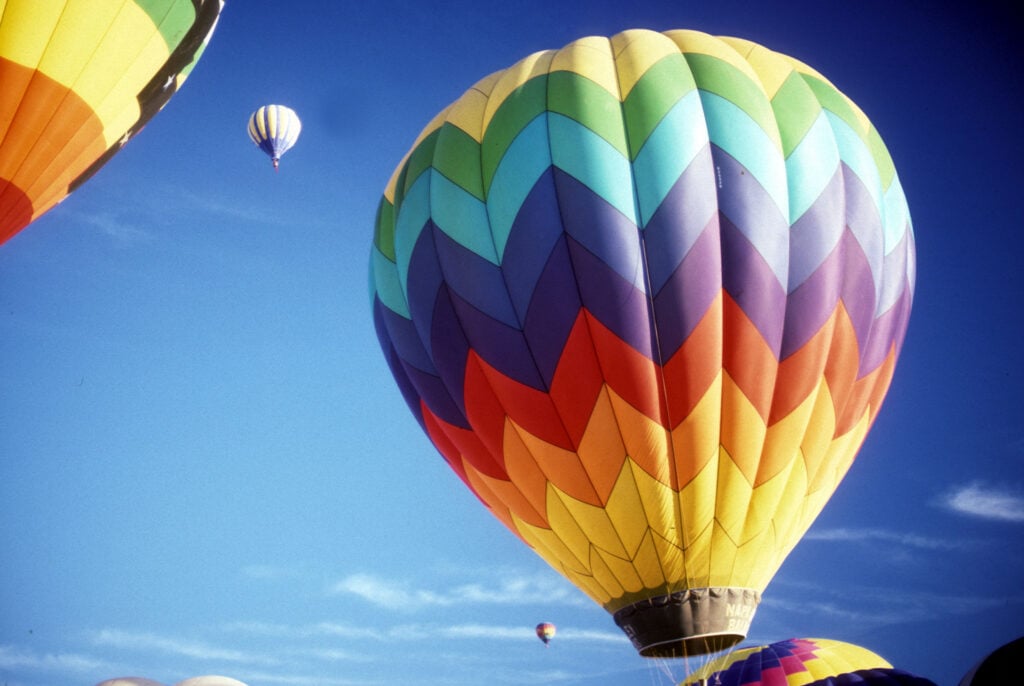
Hot air ballooning is one of the safest forms of aviation. Hot air balloon mishaps are relatively uncommon in the United States—the National Transportation Safety Board (NTSB) reports that just 137 deaths have been related to hot air balloon incidents in the United States since they began collecting data in 1964. However, the hot air balloon accident lawyers at Lerner and Rowe know that hot air balloon accidents can be serious or even deadly. The good news is that hot air balloons are generally safer than they appear.
Hot air balloon rides are popular with tourists and New Mexico locals alike. Lerner and Rowe offer these hot air balloon safety tips.
Dangers of Hot Air Balloons
Accidents involving hot air balloons are rare, but they do happen, and they can result in serious and occasionally deadly injuries. While hard landings are one of the most common causes of hot air balloon accidents and can lead to injuries like whiplash, hot air balloons are easily influenced by their surroundings, which are more prone to cause accidents than any form of equipment failure. Here are some more dangers of hot air balloons to be aware of.
Bad Weather
Bad weather, especially high winds and monsoons, can be extremely dangerous for hot air balloons. Unfortunately, even the greatest weather predictors are occasionally wrong, and weather conditions can change in an instant, requiring hot air balloon pilots to respond rapidly in order to navigate the balloon to safety.
Collisions
Collisions with other hot air balloons are a big risk, particularly during massive balloon festivals such as those in Albuquerque. Collisions can cause the basket to topple over, the pilot to lose control, or the aircraft to catch on fire, which can lead to burn injuries.
Collisions with immovable things are particularly riskier. Power lines, trees, and sharp objects such as barbed-wire fences can pierce the nylon of the balloon, causing it to crash.
Pilot Inexperience
An inexperienced pilot can jeopardize the safety of a hot air balloon. To obtain a private hot air balloon license, a pilot only needs 10 hours of balloon flight experience in addition to passing written tests, according to current Federal Aviation Administration (FAA) standards, which many veteran pilots argue is insufficient time to gain the skills to pilot a balloon.
Hot Air Balloon Safety in Albuquerque
If you’re attending a hot air balloon event or planning on taking a hot air balloon ride when visiting New Mexico, here are some safety tips to follow.
Dress Appropriately
Hot air balloons may get chilly at high altitudes, despite the glowing fireball above your head. Wear warm, breathable clothes that allow you to move freely. Wearing supportive, close-toed shoes might also help you maintain your balance when you land.
Always Listen to Your Pilot
Although hot aAlthough hot air balloon journeys might be surprising, experienced pilots have a good idea of what to expect when navigating a balloon. Before taking off, during the trip, and as you land, pay attention to any directions the pilot offers you. These instructions are there for your safety.
Brace for Landing
In hot air balloon rides, rough landings are typical. By keeping your balance as the balloon descends and paying attention to your surroundings, you can avoid damage from a violent landing. When it’s time to brace yourself, your pilot will let you know. Keep in mind that you may be forced to lean or stoop to help everyone on board have a smooth landing.
Call the Hot Air Balloon Accident Lawyers at Lerner and Rowe
If you or a loved one suffers an injury while riding in a hot air balloon because of an inexperienced pilot or another’s negligence, you could be entitled to compensation. Contact our hot air balloon accident lawyers in Albuquerque for a free consultation regarding your case. Operators are standing by at 844-977-1900 24/7. You can also visit our office during regular business hours, talk to us via LiveChat, or submit the details of your case via online Lerner and Rowe Injury Attorneys



